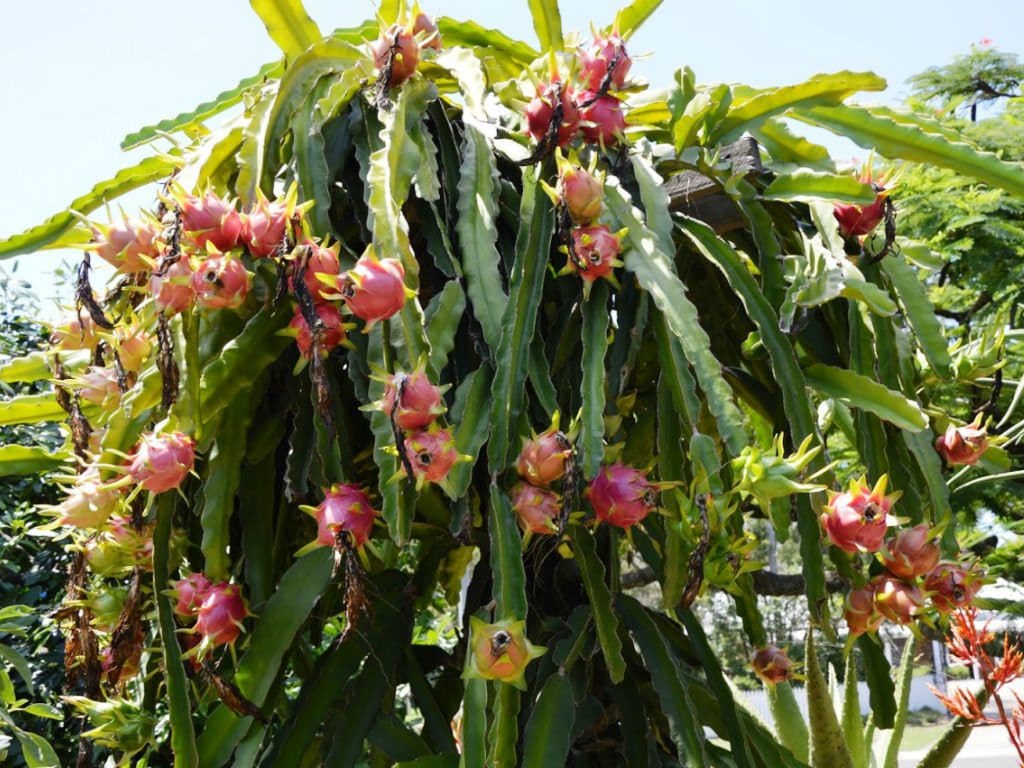
Pitahaya
Valued for Dragon Fruit and a Great Houseplant Too
The Hylocereus costaricensis, better known as pitahaya cactus, is an intriguing night-blooming, fruit-bearing plant native to Costa Rica and Nicaragua. More than 17 varieties can be found throughout this area.
The hardy cactus has a smooth and fleshy skin with sharp, short and prickly needles. While sometimes found growing in the ground, the pithaya also loves to climb just about anything it can grab onto with incredibly strong aerial roots. You will find it climbing tree trunks, fencing and walls. There are many large examples on wood fence posts along the highway near Orotina’s mango farms. It is also common to see them up in the northern parts of Puntarenas Province as well as in Guanacaste.
The pitahaya cactus blooms during rainy season and always at night. The blooms generally last only a few days. If you’re lucky, you might just see one either in bloom or producing a beautiful pink fruit called the pitahaya.
The pitahaya fruit is commonly known as the dragon fruit. It comes out green at first, then turns to a deep reddish-pink colour as it matures. This fruit has become increasingly popular as a superfood supplement with many added health benefits. On the outside, it somewhat resembles a pink artichoke. On the inside, the fruit’s white and fleshy “meat” contains tiny black seeds. The taste is sweet and the texture slightly crunchy.
Health benefits
Dragon fruit contains a high amount of antioxidants, which can help ward off disease by boosting the immune system. The fruit is also a great source of magnesium and vitamin C. The seeds alone contain a good dose of omega-3 and omega-9 fatty acids, which can also help maintain a healthy heart. Pitahaya fruit can be enjoyed in smoothies, salads, preserves and deserts.
While the pitahaya cactus is primarily grown for food production, it also makes a great houseplant. Just keep in mind that you need to give it a proper space to hang or climb, as it can become quite large!
The pitahaya cactus prefers well draining soil, and a good cactus soil mix will work well. Although this species can handle more water than most cacti, it is still important to avoid overwatering. Every 10 to 14 days should be sufficient. Give your cactus good light so that it grows more quickly and produces fruit. You can also give your pitahaya plant a flowering fertilizer every month during active growth periods.
Propagating your pitahaya from cutting is easy by removing segmented sections of the cactus. It’s advisable not to remove too many segments at once as this will stunt the mother plant’s growth. To remove a segmented section, use a sharp knife and cut at the thinnest section where one segment meets another. Once you have your cutting, allow two to five days for the skin to heal. You can also put a bit of cinnamon on the open wound to prevent fungus growth. After the wound has scabbed over, pot your cactus segment in cactus soil.
Go easy on watering for the first few months as the cactus will not yet have a well-developed root system and will be more prone to root rot. You should start to notice some growth within a month’s time, and hopefully it will produce fruit within a few years.
Happy growing!
